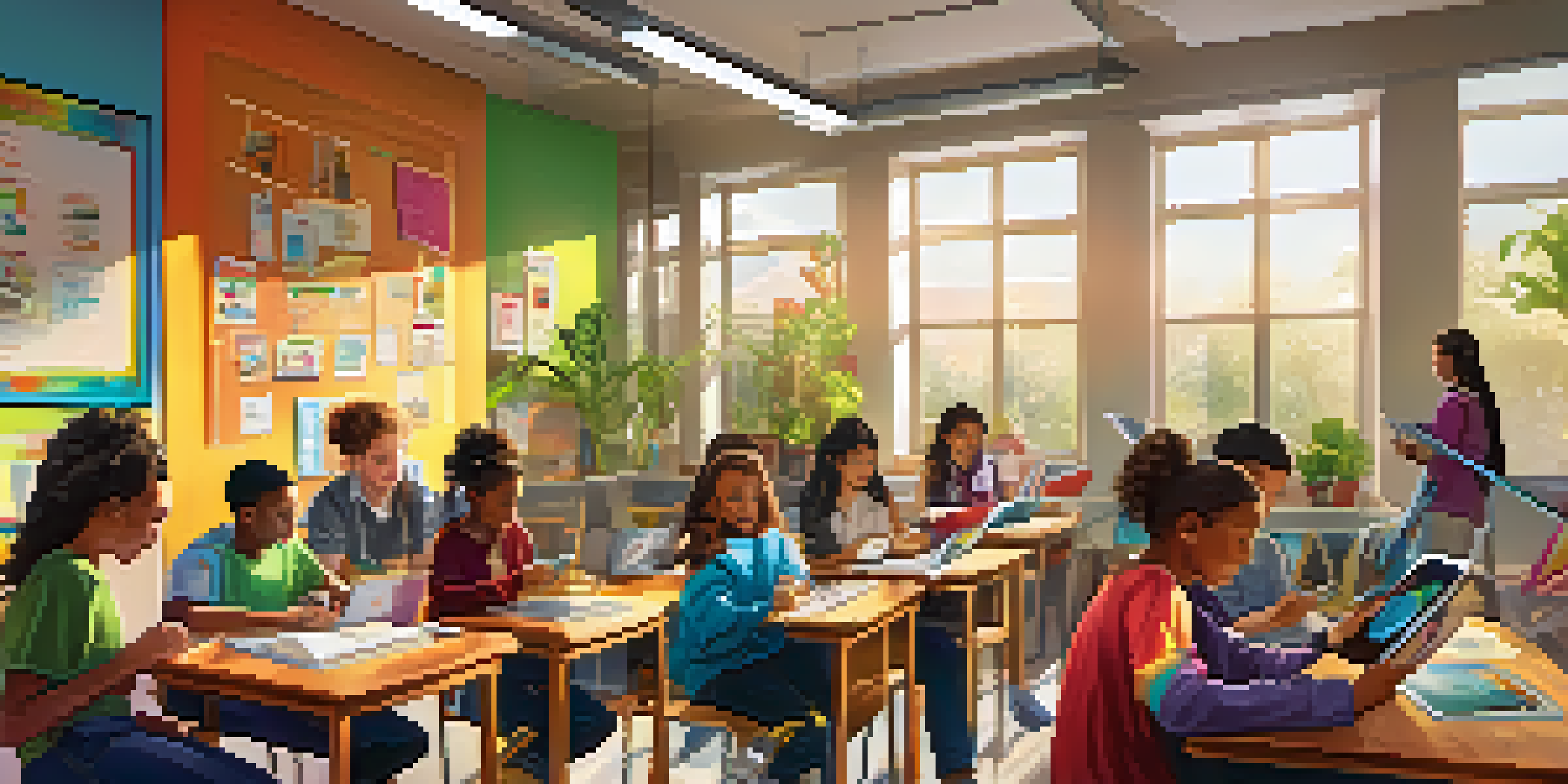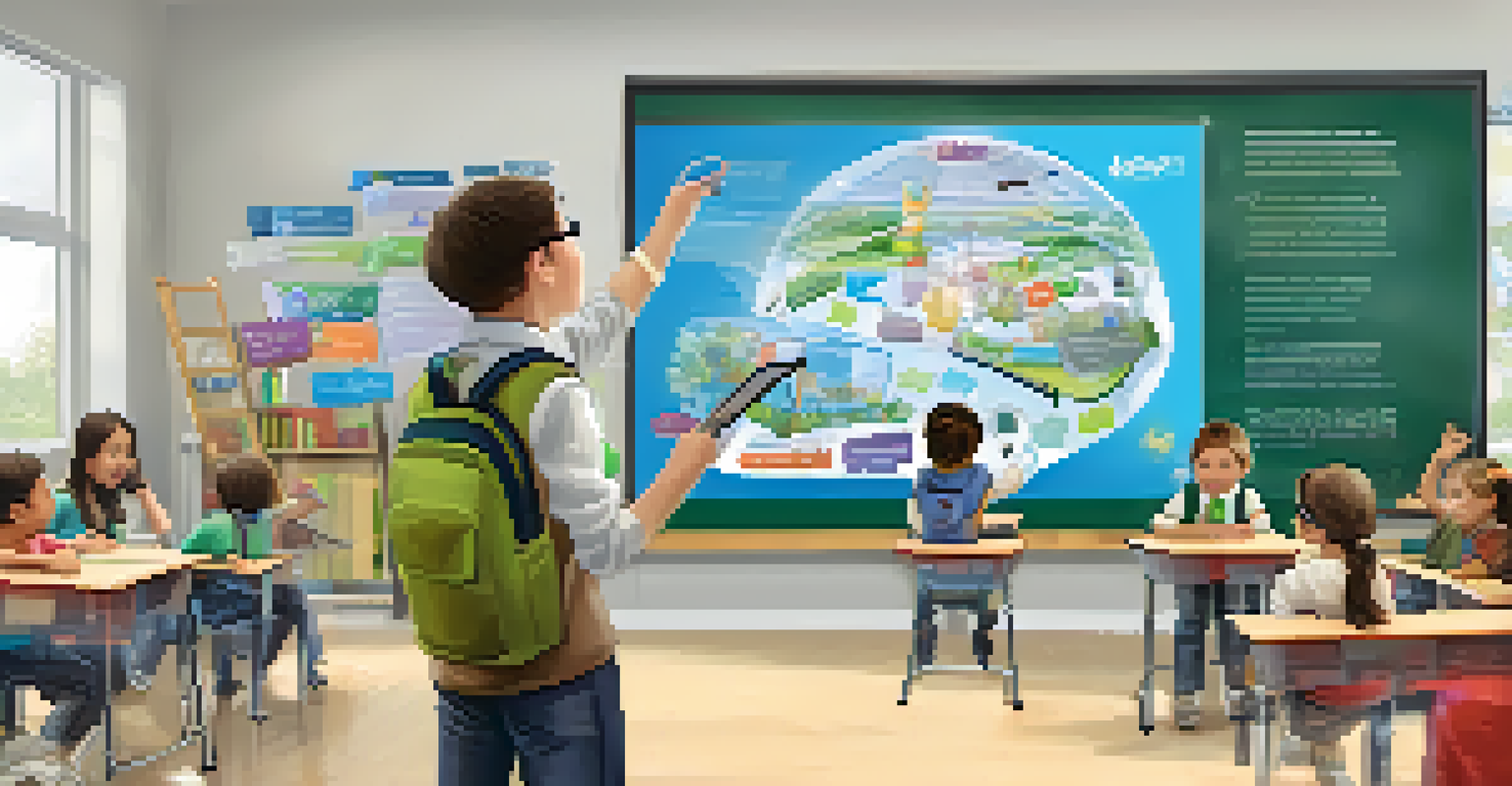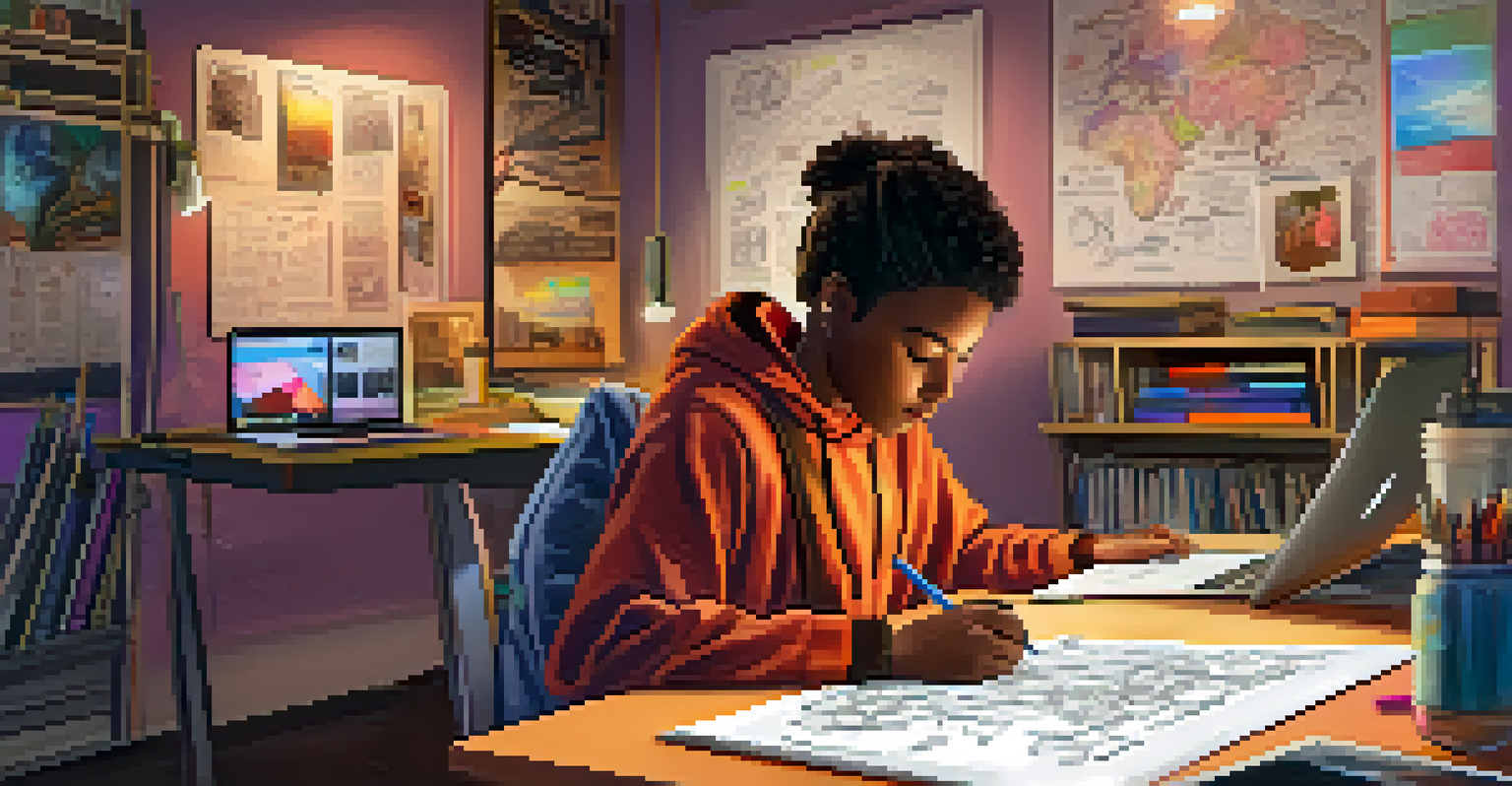Creating a Transmedia Learning Plan for Diverse Classrooms

Understanding Transmedia Learning in Education
Transmedia learning is an innovative approach that uses multiple media platforms to engage students. Imagine a lesson where students can explore a story through books, videos, and interactive games; this is the essence of transmedia. By integrating various formats, educators can cater to different learning styles and preferences, making education more inclusive.
The beautiful thing about learning is that no one can take it away from you.
This method allows for deeper exploration of topics, as students can approach the same content from various angles. For instance, a history lesson might include documentaries, podcasts, and virtual reality experiences, enhancing understanding and retention. The goal is to create a rich tapestry of information that students can weave together.
As classrooms become increasingly diverse, transmedia learning equips teachers to address a wide range of abilities and backgrounds. It encourages collaboration and communication among students, fostering a more vibrant learning environment. Ultimately, this approach empowers students to become active participants in their own learning journeys.
Identifying the Needs of Diverse Learners
Every classroom is a melting pot of cultures, abilities, and learning styles. To create an effective transmedia learning plan, it's crucial to first understand these unique needs. Conducting surveys or informal assessments can help identify students' preferences and challenges, enabling a more targeted approach.

Consider factors such as language proficiency, prior knowledge, and individual interests. For example, a student who loves storytelling might thrive with narrative-driven content, while another may prefer visual aids. By recognizing these differences, you can design a plan that resonates with every student.
Transmedia Engages Diverse Learners
Transmedia learning utilizes various media formats to cater to different learning styles, enhancing engagement and inclusivity in the classroom.
Moreover, engaging with parents and caregivers can provide valuable insights into students' backgrounds and experiences. This collaborative approach ensures that your learning plan is not only diverse but also relevant and meaningful to all learners. Remember, the goal is to create an inclusive environment where every student feels valued and understood.
Selecting Appropriate Media Formats
Choosing the right media formats is crucial in a transmedia learning plan. With so many options available, it's essential to select those that best suit your learning objectives and your students' needs. Think about incorporating a mix of videos, podcasts, interactive websites, and social media platforms to create a dynamic learning experience.
Education is the most powerful weapon which you can use to change the world.
For instance, if you’re teaching a science unit, you might use animated videos to explain concepts, podcasts for interviews with scientists, and hands-on experiments for practical application. Each format can complement the others, reinforcing the same ideas while catering to different learning styles.
Additionally, consider accessibility when selecting media. Ensure that all students can engage with the content, whether through subtitles, audio descriptions, or simplified text. By prioritizing inclusivity in your media choices, you enhance the learning experience for everyone in the classroom.
Designing Engaging and Interactive Activities
Engagement is key in any learning plan, and transmedia offers unique opportunities to create interactive activities. Think beyond traditional assignments and incorporate gamified elements, collaborative projects, or role-playing scenarios. These engaging activities not only capture students' attention but also foster teamwork and critical thinking.
For example, you might have students create a digital story using various media formats to demonstrate their understanding of a topic. This allows them to showcase their creativity while reinforcing their learning. Plus, when students feel invested in their work, they're more likely to retain information.
Assess Learning Creatively
Employing diverse assessment methods allows educators to capture a comprehensive understanding of student learning and promote a growth mindset.
Moreover, providing choices within these activities can empower students and cater to their individual interests. By allowing learners to select how they demonstrate their understanding, you create a sense of ownership in their education. This approach not only motivates students but also helps them develop essential skills for future success.
Incorporating Technology in Learning Plans
Technology is a powerful tool in transmedia learning, offering endless possibilities for enhancing education. By integrating digital platforms and tools, you can create a more immersive learning experience. Think of apps, online forums, and multimedia resources that encourage collaboration and exploration.
For instance, using a platform like Padlet allows students to share their thoughts and resources in real-time, fostering a sense of community. Additionally, virtual reality can transport students to historical sites or distant planets, making learning feel more tangible and exciting.
However, it's essential to ensure that technology is used purposefully. Incorporate tools that align with your learning objectives and enhance the overall experience. By thoughtfully integrating technology, you can create a learning environment that is both engaging and effective for diverse learners.
Assessing Student Learning Through Multiple Channels
Assessment in a transmedia learning plan should be as diverse as the learners themselves. Utilizing a variety of assessment methods helps capture a comprehensive picture of student understanding. Consider formative assessments like quizzes, peer reviews, and self-reflections alongside traditional tests.
For example, students could create video presentations to demonstrate their understanding of a topic, allowing for creativity while still assessing content knowledge. This approach recognizes that students express their learning in different ways, providing a more accurate reflection of their abilities.
Foster a Supportive Environment
Creating a nurturing classroom culture encourages student expression and collaboration, essential for effective transmedia learning experiences.
Furthermore, engaging students in self-assessment encourages them to take ownership of their learning. Providing opportunities for reflection and feedback can help learners identify their strengths and areas for growth. This formative process fosters a growth mindset, empowering students to embrace challenges and continue developing their skills.
Creating a Supportive Learning Environment
A supportive environment is crucial for the success of a transmedia learning plan. This means fostering a classroom culture where students feel safe to express their thoughts and ideas. Encourage open discussions, celebrate diversity, and promote inclusivity to create an atmosphere where everyone feels valued.
Building relationships with students is essential; when they feel connected to you and their peers, they're more likely to engage in the learning process. Take time to learn about their interests, backgrounds, and experiences, and show genuine care for their well-being.

Additionally, provide resources and support for students who may struggle with certain media formats or technologies. Offering guidance and encouragement can help bridge gaps and ensure that every learner has the opportunity to thrive. A nurturing environment sets the stage for transformative learning experiences.